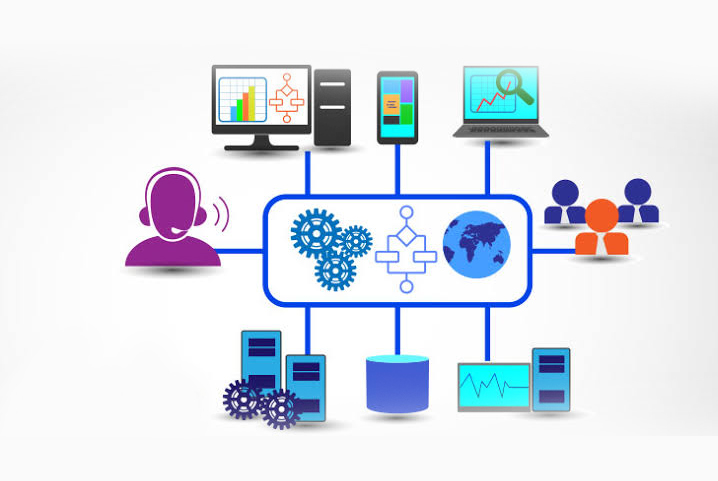
From desktop computers to the Internet of Things (IoT), business communication has changed by leaps and bounds in the last decade. Enterprise mobility is transforming the way businesses collaborate and coordinate for stronger and more consistent productivity and growth. While it may be too early to say that enterprise mobility has reached its zenith, there are stats that clearly indicate, mobility’s growing importance in the enterprise landscape.
By 2020, the world is expected to have over 50 billion internet-connected devices sending information to and fro at the speed of light. This breaks down to almost 7 IoT devices per person! Experts surprisingly believe this is just the beginning of a completely connected world. In this blog, we try to explore the benefits that make mobility a most precious business need as well as why mobility is a 21st-century business-necessity.
The Internet and Enterprise Mobility

Smarter is no longer an ‘elite’ adjective reserved only for big enterprises with deep pockets. Today, the internet is empowering enterprises, small, medium and large-scale alike, to adopt smarter mobility solutions for business growth and productivity. However, unlike a few years ago, mobility like every other technology has entered the era of cloud computing and data analytics. This means business applications can now do a lot more than they could previously.
In fact, business applications are not just mere tools that make work easy, but they are now perfectly intelligent systems capable of doing deep analytics and delivering insights for decision making.
Shifting Enterprise Mobility Trends
Before smartphones became the new normal, enterprise mobility was one dimensional and monochrome. The best enterprises could offer to their employees, mostly sales executives, was a laptop with limited applications for remote reporting, mailing and at times web browsing. Beyond this, there was little the employees could do. However, this changed completely with two things i.e., internet and smartphones.
Smartphones elevated mobile computing powers to new levels and the spread of the internet meant that the global population was now truly connected. These two factors together culminated to form the building blocks for 21st-century enterprise mobility. Enterprise mobility paved the way for workplace mobility which meant enterprise employees were now within reach all-time anytime. As per a survey by MarketWatch, 50% of the global workforce will be mobile by 2020.
These stats are backed by Silicon Valley tech giants like Microsoft, Google, etc. In fact, Larry Page said, “We are no longer in a mobile-first world. We are in a mobile-only world!”
What Does Being Mobile-First Actually Mean?
Mobile-first means prioritizing mobile-user experience over everything else. The end users can be enterprise customers or workforce. Depending on the end-user the mobile-first approach must serve the following key goals:
For Workforce
- Improve employee satisfaction and productivity.
- Improve data security and minimize the risk of incidents.
- Create a more flexible, adaptable and collaborative enterprise architecture/framework.
- Ease product development, distribution, and maintenance.
- Streamline business processes and workflows.
For Customers
- Align customer journey with business goals and objectives.
- A consistently great product/service experience.
- Improve engagements.
- Easy support and feedback.
- Brand awareness.
Is the Mobility Migration Over or Has it Just Begun?

It would be fair to say that the enterprise mobility ship has not sailed yet and there is enough room for each and every enterprise. But the challenge does not lie in adopting mobility. The true and only challenge lies in ensuring a strategy that is in line with both business goals and vision. Experts suggest that more than 50% of the enterprise mobility strategies fail for a host of reasons including:
Enterprise Mobility Pitfalls
- Weakly defined scope.
- Bad prioritization.
- Poor user experience.
- Obsolete technology.
- Inexperienced developers.
What Every Enterprise Must Keep in Mind?
According to insight.com, nearly 91% of businesses plan to adopt mobile workforce strategies and the BYOD market will reach $73.30 billion by 2021. Never before in the history of enterprise has there been an opportunity to create a truly agile 24*7 workforce and the benefits far outweigh the costs involved.
For enterprise mobility adopters these are both good times and bad times. They must keep in mind as far as ROI and mobility success is concerned, a ‘once for all’ approach will invite nothing but failure (short term and long term). Any successful mobility strategy has to have a sequential approach.
It is essential that enterprises carefully prioritize the process and workflows that need mobility the most. And once they have introduced mobility to most important business functions and departments, they can expand the net to other functions, one at a time. With decades of experience and unparalleled technical expertise, Pratham is a trusted enterprise mobility solution provider. Our business-specific solutions have helped enterprises of all scale and size leverage the power of mobility. We help enterprises to take charge of their mobility initiatives with a well-defined and cost-effective strategy. To know more please visit








